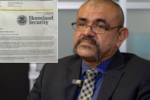A 7.0 magnitude earthquake struck off the coast of Northern California on Thursday morning, prompting a tsunami warning that briefly affected millions across the West Coast. The earthquake, centered near Humboldt County, is the second-most powerful to hit the U.S. in over a decade, raising fears of a potentially devastating wave.
Swift Emergency Actions
Following the quake, authorities took immediate precautionary measures. Bay Area Rapid Transit (BART) temporarily shut down the Transbay Tube, and Muni halted select transit routes to ensure public safety. Residents near the coastline were advised to evacuate to higher ground while officials assessed the tsunami risk.
Although the tsunami warning was ultimately canceled as the threat subsided, the quake caused some damage in Humboldt County. Structural issues were reported, though no major injuries have been confirmed.
Community Response and Lessons
The event served as a wake-up call for many coastal residents. Some gathered at beaches and waterfronts to monitor the potential tsunami, while others expressed relief once the warning was lifted. The earthquake and subsequent alert underscore the importance of preparedness in seismically active regions like Northern California.
Preparedness: A Vital Priority
This incident highlights the critical need for robust emergency response systems and public awareness campaigns. The West Coast, part of the Pacific Ring of Fire, faces ongoing seismic risks, making preparedness essential for mitigating future disasters. Residents are encouraged to have emergency kits, evacuation plans, and access to reliable communication channels to stay informed during natural disasters.
As the Bay Area breathes a collective sigh of relief, officials continue to assess the quake’s impact and work toward ensuring readiness for future seismic events.
For resources on earthquake preparedness and tips to stay safe during seismic events, visit the U.S. Geological Survey’s Earthquake Hazards Program.
Note: Every piece of content is rigorously reviewed by our team of experienced writers and editors to ensure its accuracy. Our writers use credible sources and adhere to strict fact-checking protocols to verify all claims and data before publication. If an error is identified, we promptly correct it and strive for transparency in all updates.








